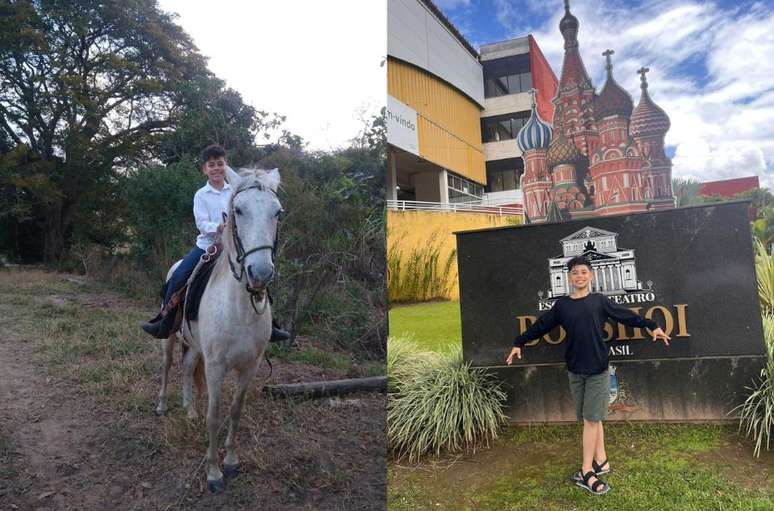Scientists hope to study mini-brains in the microgravity environment to pave the way for discoveries such as treatments for neural diseases or that could even help astronauts with space travel.
Two Brazilian scientists have just sent an experiment into space that aims to lead to discoveries that can both help fight serious world ills, such as autism and Alzheimer’s, and tackle cosmic problems, such as the premature aging of astronauts’ brains when I’m out of life. Earth.
“They are brain organoids created in the laboratory, but with real human cells,” explains biomedical doctor Livia Luz, 30, from Sao Paulo, in an interview with BBC Brasil.
“We will test, over the course of thirty days, the effect of microgravity and what the possible consequences are, for example, for an astronaut who spends a lot of time out there in space.”
Together with her colleague and compatriot, the Rio de Janeiro biologist Luisa Coelho, Livia carries out the project. They sent three payloads, as cargoes with research material are called in English, on a rocket launched by the American company SpaceX on November 9. They each contain thousands of these brain organoids, popularly nicknamed mini-brains.
Mini-brains are tiny replicas of neural networks that simulate the development of this organ in humans. After taking off with the rocket from the Kennedy Space Center, the base of NASA, the American space agency, in Florida, almost 3 tons of materials were delivered to two astronauts who are on the International Space Station (ISS).
“Science still knows very little about the effects of microgravity on our bodies and minds,” says 24-year-old Luisa Coelho. “If NASA really wants to send the first manned trip to Mars soon, that needs to change.”
The American space agency plans to send a spacecraft with astronauts to the neighboring planet in 2033. The initial idea is to orbit Mars and, on the way back, do the same with Venus, before returning to Earth . The proposal is to pave the way for a space mission that will land on the Red Planet, scheduled for 2037.
Elderly people in space
The pair of Brazilian scientists work for the Muotri laboratory at the University of California at San Diego (UCSD). The department is led by another Brazilian, neuroscientist Alysson Muotri, 49, from Sao Paulo.
Muotri’s team has been sending experiments to the ISS since 2019. To cover the costs of the first of them, four years ago, the scientist even mortgaged his house to raise the money needed to finance the undertaking.
His involvement with space studies began three years earlier, in 2016. After reading NASA research on experiments conducted on the ISS, the Brazilian disagreed with part of the conclusions.
For him it has been proven that our cells age faster in space. But NASA thought it was a temporary effect, while the Brazilian theorized that, in the brain, it would be permanent.
The first time he alerted NASA to the problem, they paid no attention. After the promising results of the self-funded experiment, however, Muotri secured funding from others. In 2020, it sent another to the ISS, and the following year, another.
The work in which Livia and Luisa are now participating is the fourth in the laboratory to be sent into space, in collaboration with NASA. “They were materials with very varied genetic variability. The idea is to see how each individual can react to the microgravity environment and, who knows, discover more resistant organisms that can lead us to effective treatments for astronauts,” Alysson Muotri tells BBC Brasil.
Experiments conducted so far have revealed that neuronal cells age faster in space. In one month, according to the scientist, the equivalent of ten years ahead. Upon returning to Earth they regenerate a little, but not completely.
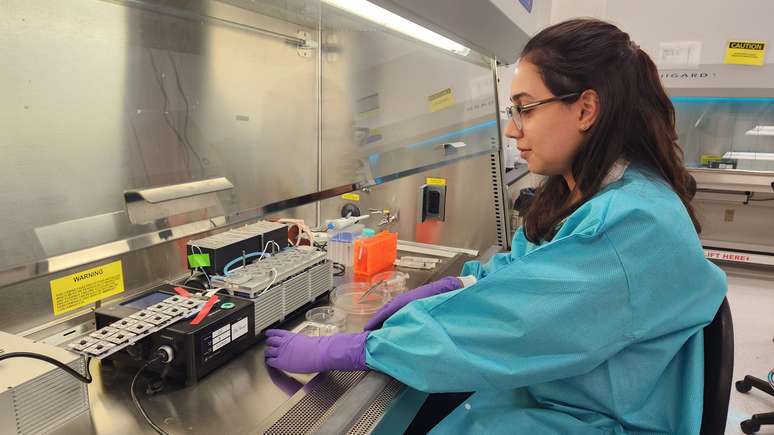
A few ways to manipulate the fragile material of mini-brains on the ISS have been tested. In Muotri’s office in San Diego, on display is a model of the robot developed by the lab and responsible for replicating the experiments he and his team carry out here on Earth. Or rather, it has been like this until now.
“Cerebral organoids are very sensitive and the machine cannot treat them with the necessary delicacy,” explains biomedical doctor Livia Luz. “This time we tested another method.”
The team of scientists calculated how to harness the microgravity of space to trigger the changes they hope to see. So, this time no one, neither machines nor humans, will have to manipulate the material on the ISS.
Understanding how our brain ages and, even more so, which mechanisms can accelerate or contain this process can lead to several discoveries. As in the field of fighting diseases linked to the degenerative process of our cells, such as autism and schizophrenia, perhaps leading to new treatments for these diseases.
“There are those who don’t believe in it, but I believe in curing autism,” says Muotri, father of an autistic boy.
In addition to this research, the laboratory that bears his name carries out several experiments with mini-brains. A pioneering line of studies, for example, has reproduced what these organs looked like in Neanderthals, a human species that became extinct 40,000 years ago, inaugurating a new field of science, neuroarchaeology.
A ‘laboratory’ of Brazilians
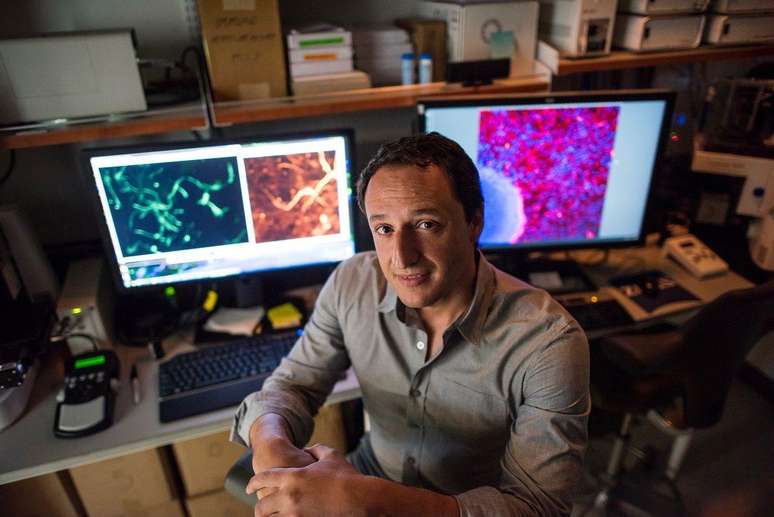
UCSD’s Muotri Lab has 39 scientists, about 80% of them Brazilian.
“There is a greater prevalence because professionals from our country, when they hear about me here, end up looking for me, because they want to work with me,” says Muotri.
Luisa Coelho was born in Petrópolis, Rio de Janeiro, and, after graduating from high school, moved to San Diego at the encouragement of an aunt who lived in the Californian city. There she entered UCSD, where she graduated as a biologist, received a master’s degree and became acquainted with the work of her Brazilian colleague.
“In my second year of graduation, my family sent me a report on Muotri’s work,” he recalls. “I wanted to learn more about space issues and I sent him an email. I started doing the internship for free and today I work as a technician in the laboratory and I intend to start my doctorate here.”
Biomedical scientist Livia Luz began collaborating with Muotri during her doctorate at the University of São Paulo (USP). After graduation, she suggested postdoctoral research at UCSD. Since last year you have been working in the laboratory.
Muotri and his team participated in pioneering studies. For example, in addition to founding the field of neuroarchaeology and space experiments, you were part of the team that discovered, in 2016, the relationship between the Zika virus circulating in Brazil and cases of microcephaly.
“We want to bring the best brains in the world here, and it’s important to have minds that come from different backgrounds,” says epidemiologist Corinne Peek-Asa, vice-chancellor of UCSD and head of the university’s scientific research area, in an interview speech with BBC Brazil. “There is the problem of ‘brain drain’, both from countries like Brazil and the United States, which we have suffered from in recent years. I don’t know what the solution is, but I believe it starts with encouraging transnational partnerships .”
As for the predominantly Brazilian lab led by Muotri, he says he sees the neuroscientist as a “classical researcher, trying to solve real problems.” And he adds: “It’s a team that cares about influencing the human experience, solving pressing problems in our lives.”
The scientist-astronaut
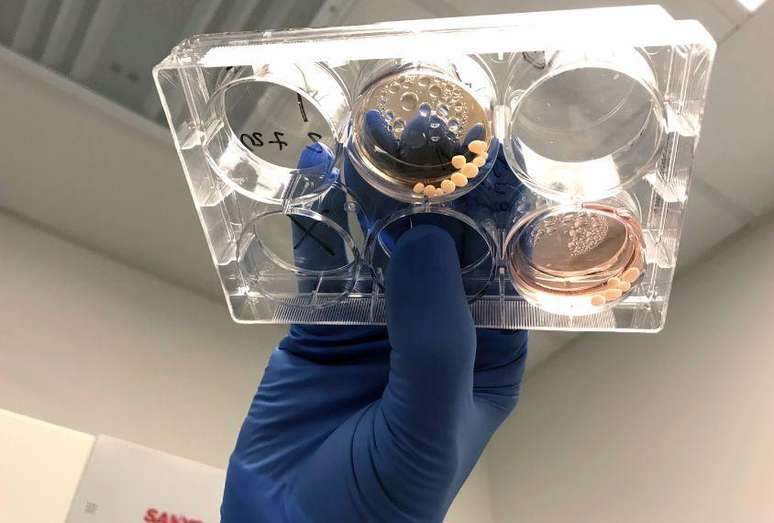
An even more ambitious step is planned for Muotri in 2024. There are some procedures in space experiments that, while delicate, would be better performed by human hands. The solution has been found: Muotri is preparing to become an astronaut.
The invitation to go into space came at the end of 2022, in a meeting with two NASA astronauts. “The initial idea was to train them to do work on the ISS. But then they realized that it would be easier and faster to prepare me to be an astronaut rather than teaching them the advanced techniques we use”, recalls the Brazilian.
There they proposed that Muotri board a rocket to carry out neuroscientific experiments on the ISS, the space laboratory that orbits the Earth at an altitude of 400 kilometers. He accepted and the flight is expected by the end of 2024.
He will be the first Brazilian scientist to embark in space. The other two compatriots who accomplished the feat were now Senator Marcos Pontes, former Air Force pilot, in 2006, and engineer Victor Hespanha, as a tourist, in 2022.
Livia Luz, one of the scientists who sent the mini-brains into space, is expected to be trained with him as his replacement on the mission should any eventuality arise. “I’m also trying to get another seat on this rocket, maybe so he can come with me,” comments Muotri.
In addition to this first trip, others will have to be made subsequently to continue with the work.
“My ambition is to transform the members of the laboratory into astronauts. Luisa is second on the list, after Livia,” he says, citing the name of another Brazilian involved in research on brain organoids.
For now the space mission, despite involving Brazilians, is above all a United States initiative. “We should probably have multinational funding eventually. There is interest from countries like Canada and South Korea,” says the neuroscientist. He also tried to include Brazil in the mix.
In June, after talks with representatives of the Ministry of Science, Technology and Innovation, he met with President Luiz Inácio Lula da Silva. According to the report, there was a promise that the country would join in some way.
“A few weeks ago, however, I received a phone call telling me that the budget for this project had been reduced. So I can’t say for sure whether Brazil will join, or how,” says Muotri.
Also considered to be on a mission, Livia Luz underlines that she preferred to make the trip “with the Brazilian flag on her uniform”. If it is not possible, however, she will still accept the adventure, “even if representing another country”.
Source: Terra
Ben Stock is a lifestyle journalist and author at Gossipify. He writes about topics such as health, wellness, travel, food and home decor. He provides practical advice and inspiration to improve well-being, keeps readers up to date with latest lifestyle news and trends, known for his engaging writing style, in-depth analysis and unique perspectives.

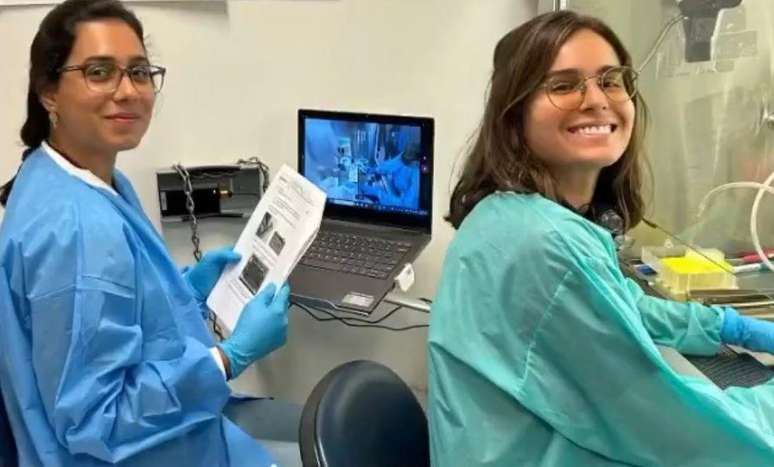
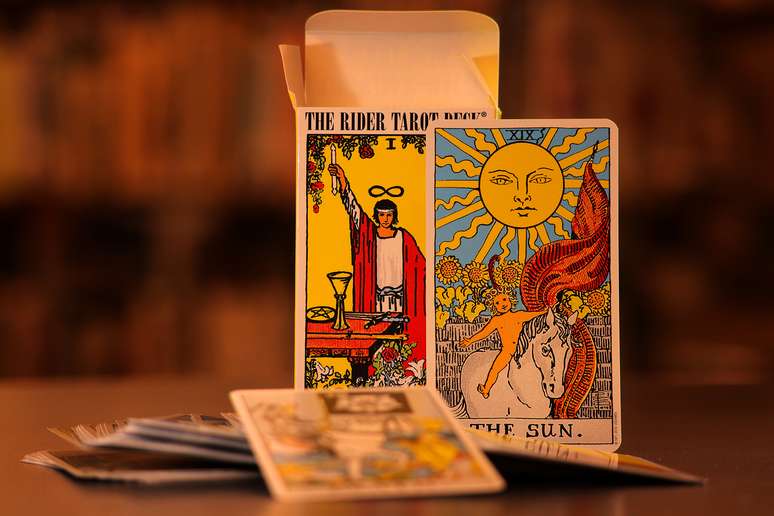
-1ibeskywkh3z8.png)



